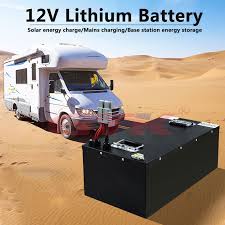Discover the advantages and disadvantages of LiFePO4 and ternary lithium batteries, particularly in their application for electric vehicles. Learn how to make an informed choice when selecting between these battery types for your e-bike or electric vehicle.
LiFePO4 and ternary lithium batteries are two popular choices for powering electric vehicles, each with unique characteristics that impact performance and longevity. Let’s delve into their pros and cons to help you make the right battery choice.
LiFePO4 vs Ternary Lithium Battery: A Comparative Analysis

LiFePO4 Battery:
- Advantages:
- Long lifespan with up to 2000-7000 charge cycles.
- Enhanced safety due to stable chemistry and resistance to thermal runaway.
- Good performance in a wide range of temperatures.
- Disadvantages:
- Lower energy density compared to ternary lithium batteries.
- Slightly heavier and bulkier, affecting overall vehicle weight.
Ternary Lithium Battery:
- Advantages:
- Higher energy density translates to lighter and more compact battery packs.
- Enhanced energy storage capacity, ideal for longer-range electric vehicles.
- Widely used in electric cars for its energy efficiency.
- Disadvantages:
- Shorter lifespan with around 1000-1500 charge cycles.
- Increased risk of thermal runaway under certain conditions.
Choosing the Right Battery for Your Electric Vehicle
When deciding between LiFePO4 and ternary lithium batteries for your electric vehicle, consider the following factors:
- Usage Requirements: Evaluate your vehicle’s range and power needs to match the battery’s energy density and capacity.
- Safety Concerns: Assess the importance of battery safety features, particularly in the event of extreme temperatures or high-stress conditions.
- Longevity: Determine how important lifespan and cycle durability are for your vehicle’s intended use.

Conclusion
Both LiFePO4 and ternary lithium batteries offer distinct advantages and drawbacks, making them suitable for different electric vehicle applications. By understanding their characteristics and assessing your specific needs, you can make an informed choice for your e-bike or electric car.


Линзы для лазерного станка – это элементы оптической системы лазерной головки. Устанавливаются в блоках коллиматора и фокусатора.
Подвержены быстрому износу и нуждаются в регулярной замене. Наша компания производит линзы для оптоволоконных и твердотельных лазеров из плавленого кварца,
износостойких материалов высокой чистоты с отличными оптическими характеристиками. Всегда в наличии [url=https://moidomiks.ru/sovety-masteram/fokusiruyushhaya-linza-dlya-lazernogo-stanka-naznachenie-i-osobennosti-vybora]фокусная линза для лазерного станка[/url]
Линзы для лазерного станка – это элементы оптической системы лазерной головки. Устанавливаются в блоках коллиматора и фокусатора.
Подвержены быстрому износу и нуждаются в регулярной замене. Наша компания производит линзы для оптоволоконных и твердотельных лазеров из плавленого кварца,
износостойких материалов высокой чистоты с отличными оптическими характеристиками. Всегда в наличии [url=https://progorod58.ru/Fokusiruyushchaya-linza]фокусирующая линза[/url]
Линзы для лазерного станка – это элементы оптической системы лазерной головки. Устанавливаются в блоках коллиматора и фокусатора.
Подвержены быстрому износу и нуждаются в регулярной замене. Наша компания производит линзы для оптоволоконных и твердотельных лазеров из плавленого кварца,
износостойких материалов высокой чистоты с отличными оптическими характеристиками. Всегда в наличии [url=https://mixstuff.ru/archives/165805]оптика для лазеров[/url]